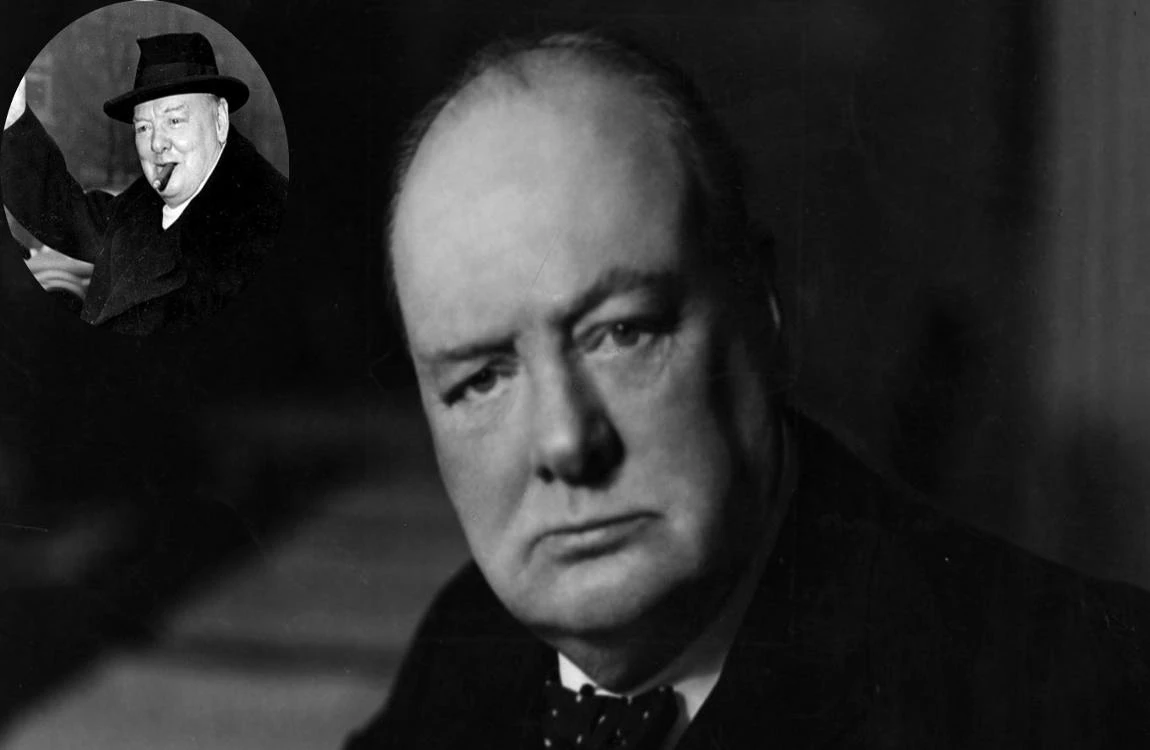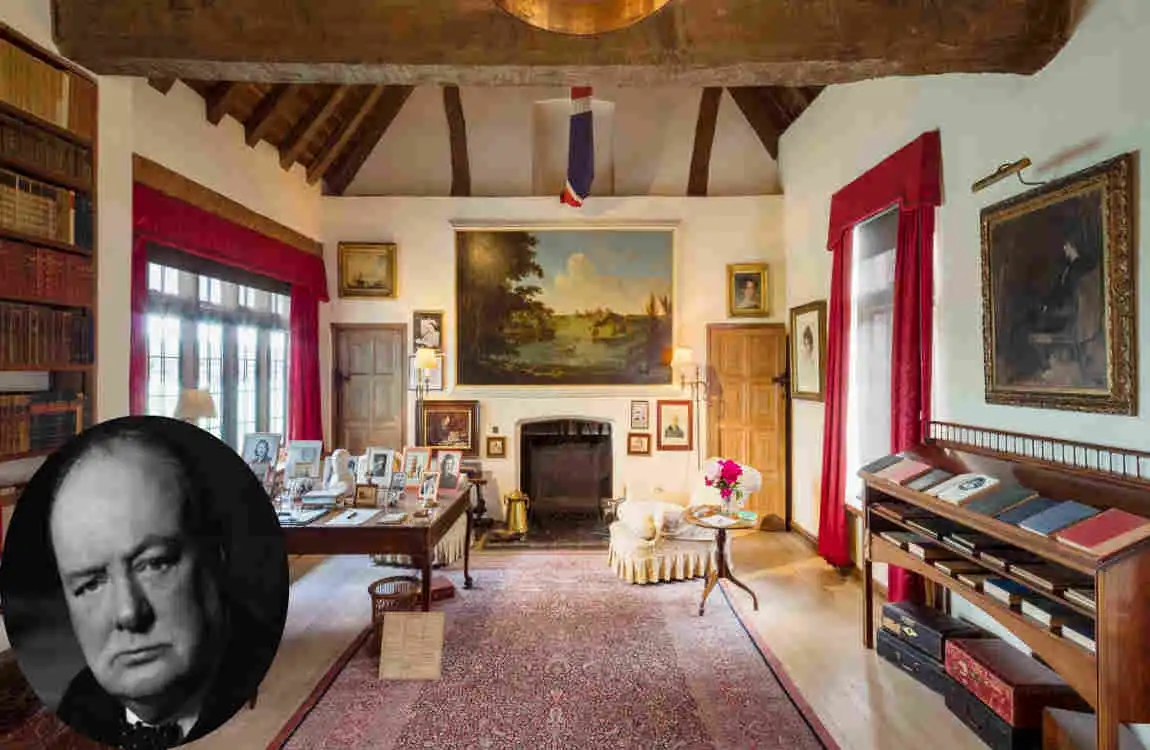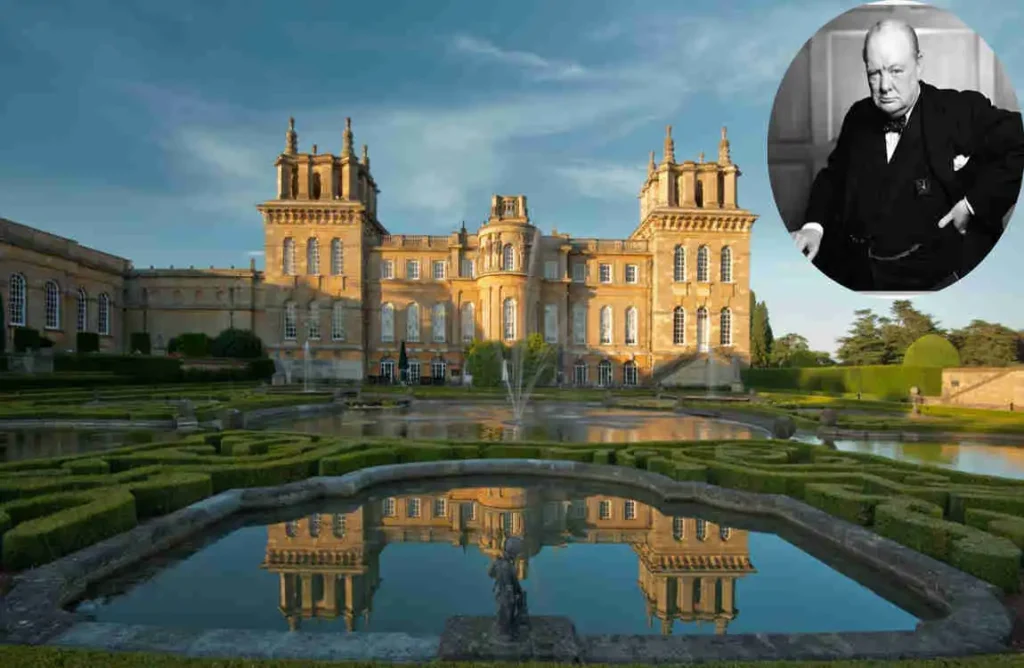Winston Churchill’s home, Chartwell, is a legacy-rich country house near Westerham, Kent, that he cherished for over forty years. Purchased in 1922, Chartwell became a personal sanctuary where Churchill inspired his political and literary work, especially during his “Wilderness years” in the 1930s when he was out of government. The modern house and its stunning gardens were a reflection of Churchill’s personality and family life, with the landscape providing inspiration and solace. Today, Chartwell stands preserved almost as it was in Churchill’s time, offering a unique glimpse into the private life of one of the 20th century’s most influential leaders.
| Attribute | Information |
|---|---|
| Full Name | Sir Winston Leonard Spencer Churchill |
| Birth Date | November 30, 1874 |
| Birth Place | Blenheim Palace, Oxfordshire, England |
| Death Date | January 24, 1965 |
| Occupation | British statesman, military officer, writer, Prime Minister of the United Kingdom |
| Political Parties | Conservative Party (majority of career), Liberal Party (1904-1924) |
| Notable Roles | Prime Minister (1940-1945, 1951-1955), Member of Parliament (1900-1964), Military officer |
| Family Background | Born into wealthy aristocratic Spencer family, parents were Lord Randolph Churchill and Jennie Jerome |
| Net Worth | Estimated at $25 million (adjusted for inflation) |
| Source of Wealth | Public service, writings, book deals, royalties |
| Residences | Born at Blenheim Palace; no current residence as deceased in 1965 |
Who is Winston Churchill?

Sir Winston Leonard Spencer Churchill (1874–1965) was a British statesman, military officer, and writer who served as the Prime Minister of the United Kingdom twice: from 1940 to 1945 during Between 1951 and 1955, and again during World War II. He was a prominent leader known for guiding Britain through the hardships of the Second World War, forming successful Allied strategies with the United States and the Soviet Union to defeat the Axis powers and shape the postwar world. Churchill’s political career spanned over six decades in Parliament, and he was aligned mainly with the Conservative Party but was also a member of the Liberal Party early in his career.
Born into the aristocratic Spencer family at Blenheim Palace in Oxfordshire, England, Churchill had a military background, serving in the British Army and participating in conflicts such as the Mahdist War and the Second Boer War. He also gained fame as a war correspondent and authored many books about his military campaigns.
Throughout his career, Churchill held several essential government roles, including President of the Board of Trade, Home Secretary, First Lord of the Admiralty during World War I, Minister of Munitions, Secretary of State for War, and Chancellor of the Exchequer. He was also awarded the Nobel Prize in Literature in 1953 for his historical writings and speeches.
Churchill is remembered as one of the most outstanding wartime leaders of the 20th century and a key figure in the history of the UK and the world.
Where Does Winston Churchill Currently Live?
Winston Churchill passed away in January 1965, so he does not currently live anywhere. His longtime home was Chartwell, a country house near Westerham, Kent, England. Churchill resided at Chartwell from 1922 until shortly before he died in 1965. He also had a London home at 28 Hyde Park Gate, where he died.
You may also read (holly madisons las vegas house quick facts insider peek).
After his death, Chartwell was opened to the public as a historic house museum, preserved with its rooms and gardens much as they were during Churchill’s lifetime. Thus, Winston Churchill’s actual residence no longer exists as he has been deceased for many decades.
History of Chartwell, Churchill’s Home

Chartwell, nestled in the picturesque Kent countryside, became Winston Churchill’s cherished retreat in 1922. The house itself dates back to the 16th century, but it evolved as Churchill made it his own.
| Attribute | Details |
|---|---|
| House Name | Chartwell |
| Address | Near Westerham, Kent, South East England |
| Historical Ownership | Dates back to 14th century (1382 owned by William-at-Well); bought by Churchill in Sept 1922 |
| House Specifications | Substantial red brick manor (rebuilt/extended 1922-24), two storeys plus basement and attics |
| Architectural Style | Vernacular style, modernised and extended by architect Philip Tilden between 1922 and 1924 |
| Notable Features | 18th-century doorcase (antique), large three-storey garden front extension (“my promontory”) with dining, drawing room, Lady Churchill’s bedroom |
| Views | Extensive views across the Weald of Kent, decisive factor for Churchill choosing the property |
| Major Renovations | Philip Tilden modernised/expanded the house in the early 1920s |
| Use/History Notes | Churchill’s home for 40+ years. Served as his study, campaign centre in 1930s, WWII refuge post-1953 stroke. Left in 1964 before death in 1965 |
| Estimated Worth | Not specifically stated for Chartwell; related Churchill London home sale referenced at £19.5 Million (for context) |
He transformed the estate into a haven filled with vibrant gardens and stunning views of rolling hills. Each room echoed his personality and passions—from art to literature.
During World War II, Chartwell served not just as a modern home but also as a strategic meeting place for key discussions about Britain’s future. It was here that he could reflect on leadership while surrounded by nature.
The property witnessed significant moments in history—both personal and national—as Churchill navigated through triumphs and challenges alike. Today, traces of its rich past still resonate within its walls, inviting visitors to step back into a time marked by resilience and vision.
Life at Chartwell: Personal and Political
Chartwell was much more than just a residence for Winston Churchill; it was his sanctuary. Nestled in the Kent countryside, this house provided him with solace amidst political turmoil.
Churchill spent countless hours painting in its gardens, finding inspiration among the lush greenery. He often retreated here to escape the pressures of leadership and reflect on his thoughts.
The home buzzed with activity as family and friends frequently visited. His wife, Clementine, played a vital role in creating a warm atmosphere that welcomed both intimate gatherings and serious discussions.
Political strategizing also unfolded within these walls. Key decisions about World War II were debated over meals at Chartwell’s dining table. The blend of personal life and public duty created an environment rich with history.
This unique interplay made Chartwell not just a home but a significant place where ideas shaped nations.
Famous Guests of Chartwell
Chartwell, Winston Churchill’s beloved home, welcomed many notable figures throughout its history. The estate served as a backdrop for intimate gatherings and essential discussions.
One of the most famous guests was President Franklin D. Roosevelt. Their friendship flourished here during World War II, as they shaped Allied strategies over tea and conversation in Churchill’s study.
Another luminary who graced Chartwell was Charles de Gaulle, the leader of Free France. His visits were marked by dialogue that reflected their shared vision for Europe’s future.
Artists like Sir John Lavery also found inspiration amid Chartwell’s serene landscapes. He painted portraits of Churchill within these walls.
These interactions contributed to a legacy steeped in diplomacy, creativity, and camaraderie—making Chartwell not just a residence but a significant meeting ground in history.
The Legacy of Chartwell: Preservation and Opening to the Public
Chartwell, Winston Churchill’s beloved home, stands as a testament to his remarkable life. After his passing in 1965, the house was bequeathed to the National Trust. This move ensured that both the property and its rich history would be preserved for future generations.
The preservation efforts have been meticulous. Careful attention is given to maintaining Churchill’s personal artifacts and the gardens he cherished. Visitors can experience not only the architecture but also the ambiance of a time when Churchill shaped world events from this very spot.
Opening Chartwell to the public has transformed it into an educational hub. Tourists flock here to explore exhibits that highlight Churchill’s philosophies and achievements. Special events are held throughout the year, making it a vibrant center of learning about one of history’s most influential figures.
Experiencing Chartwell Today: Tours and Events
Visitors to Chartwell can immerse themselves in the rich history of Winston Churchill’s home through a variety of engaging tours. Guided walks take you through the stunning gardens, where every flower and path tells a story from Churchill’s life.
Inside the house, rooms are preserved with personal artifacts that reflect his passions. You might find paintings he created or books that inspired him during pivotal moments. Each space offers a glimpse into both his public persona and private retreat.
Special events throughout the year elevate your experience further. From historical talks to themed exhibitions, there’s always something happening at Chartwell.
Families can enjoy interactive activities designed for all ages, making it an ideal day out for everyone interested in British history. Whether you’re exploring on your own or joining a group tour, Chartwell invites visitors to connect deeply with its storied past.
You may also read (jeffree stars calabasas house a home tour experience).
